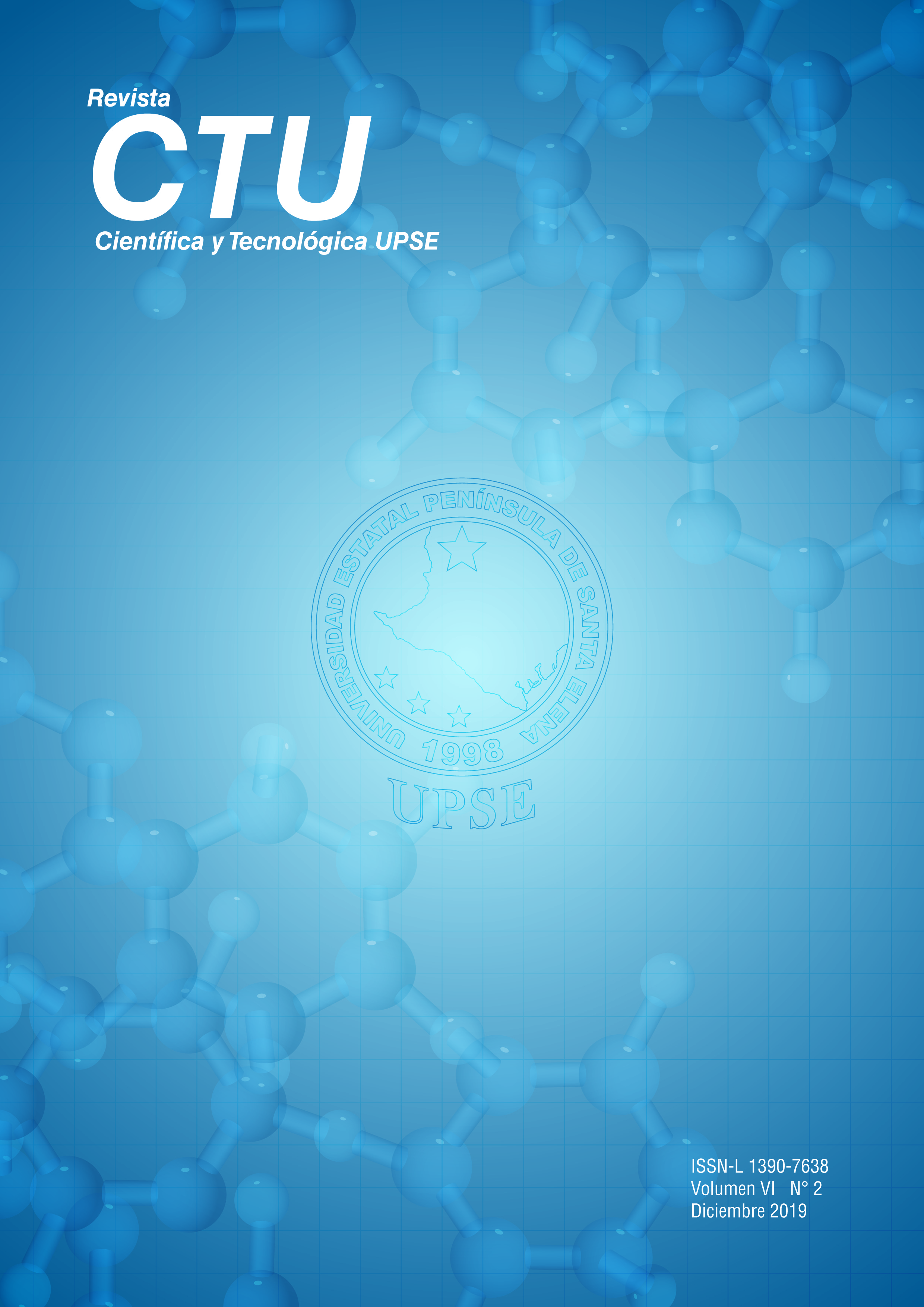El turismo de sol y playa: Impacto turístico en los ecosistemas de la comuna Ayangue, para mejorar la gestión de la actividad turística en la provincia de Santa Elena
DOI:
https://doi.org/10.26423/rctu.v6i2.494Palabras clave:
Turismo de sol y playa, impacto turístico, ecosistema, comuna Ayangue, gestión turísticaResumen
La comuna Ayangue ubicada en la provincia de Santa Elena se ha enfocado en el desarrollo turístico, teniendo como resultado la llegada masiva de turistas, esto ha generado incremento de carpas y cabañas en la zona de playa, teniendo como consecuencia inadecuada gestión de los desechos sólidos por parte de los prestadores de servicios turísticos, prácticas ambientales perjudiciales por parte de los vendedores formales e informales, la demanda de recursos bioacuáticos para la alimentación de turistas y residentes; y, el uso indiscriminado de los recursos naturales en las diferentes actividades turísticas. El objetivo de esta investigación consistió en analizar la incidencia del turismo de sol y playa en los ecosistemas de la comunidad. El método utilizado fue el analítico; la información fue levantada in situ mediante la aplicación de encuestas a los visitantes y prestadores de servicios turísticos; para el cálculo de estos datos se utilizó el muestreo no probabilístico; así también se realizó la evaluación de los factores ambientales y turísticos con la utilización de la matriz de causa - efecto de Leopold. Se obtuvo como resultado que el turismo en la comuna Ayangue genera impactos negativos altamente significativos relacionados a los cambios de hábitats, pérdida de bosque seco, impactos significativos y depreciables ligados a la expansión y creación de infraestructura turística y la extracción de recursos bioacuáticos para satisfacer el número de visitantes.
Descargas
Referencias
Cárdenas-Calle, M. (11 de Noviembre de 2018). Bioelite.Obtenido de file:///C:/Users/user1/Downloads/199-Texto%20del%20art%C3%ADculo-1059-2-10-20181211.pdf
Domínguez, M. d. (11 de junio de 2007). El turismo de segunda residencia.Obtenido de file:///C:/Users/user1/Downloads/Dialnet-ElTurismoDeSegundaResidencia-2517646%20(1).pdf
El Comercio. (2017). El turismo interno en el Ecuador generó 12,3 millones de viajes en el 2016.Obtenido de http://www.elcomercio.com/: http://www.elcomercio.com/viajar/turismointerno-ecuador-genero-12millones-2016.html
El Universo. (14 de Febrero de 2018). Santa Elena fue la provincia más visitada en este feriado de carnaval 2018.Obtenido de www.eluniverso.com: https://www.eluniverso.com/noticias/2018/02/14/nota/6623653/santa-elena-fue-provincia-mas-visitada-este-feriado-carnaval-2018
García, A. (2003). El turismo cultural y el de sol y playa: ¿sustitutos o complementarios? Obtenido de www.researchgate.net: https://www.researchgate.net/publication/39382048_El_turismo_cultural_y_el_de_sol_y_playa_sustitutivos_o_complementarios?enrichId=rgreq-aff6af7109cd15804438a1e02e7f7fb5-XXX&enrichSource=Y292ZXJQYWdlOzM5MzgyMDQ4O0FTOjE2NTY2MDc4OTMyMTcyOEAxNDE2NTA4MDE4MjM5&
Gómez, M. M. (2017). Retos del turismo español ante el cambio climático. Investigaciones Geograficas : Boletin -Instituto de Geografia, Universidad Nacional, Autonoma de Mexico, 31-47.[7]León, V. (6 de diciembre de 2013). Aproximación al turismo residencial en la provincia de Santa Elena, Ecuador. Obtenido de http://www.redalyc.org: http://www.redalyc.org/articulo.oa?id=504550956002
MAE. (2014). Plan de Manejo de la Reserva Marina El Pelado. Quito, Ecuador. 80 p.[9]Mendoza, E. J. (diciembre de 2016). OBSERVATORIO TURÍSTO: UNA HERRAMIENTA DE GESTIÓN PARA EL TURISMO DE SOL Y PLAYA EN LA PROVINCIA DE SANTA ELENA. Obtenido de www.researchgate.net: https://www.researchgate.net/publication/318003379_Observatorio_turistico_Una_herramienta_de_gestion_para_el_turismo_de_sol_y_playa_en_la_provincia_de_Santa_Elena
Ministerio Ambiente. (2018). Reserva Marina Pelado.Santa Elena: Ministerio del Ambiente. Obtenido de http://www.ambiente.gob.ec: http://www.ambiente.gob.ec/wp-content/uploads/downloads/2017/05/FASE-2-INFORME-RENDICION-DE-CUENTAS-STA-ELENA-2
Ministerio del Ambiente, S. E. (Abril de 2009). Obtenido de Ministerio Del Ambiente: http://simce.ambiente.gob.ec/sites/default/files/documentos/belen/Estudio%20Final%20Zonificacion%20y%20Ordenamiento%20zona%20costera.pdf
MINTUR. (Mayo de 2015). Obtenido de https://www.turismo.gob.ec: https://www.turismo.gob.ec/wp-content/uploads/2015/05/Documento-Proyecto-Ecuador-Potencia-Tur%C3%ADstica.pdf
MINTUR. (2019). Obtenido de www.turismo.gob.ec: https://www.turismo.gob.ec/el-ministerio/
Montes, G. M. (2016). Ecoturismo Instrumento del Desarrollo Sostenible.Obtenido de http://bibliotecadigital.udea.edu: http://bibliotecadigital.udea.edu.co/bitstream/10495/149/1/EcoturismoInstrumentoDesarrolloSostenible.pdf
PDOT, G. A. (2014). Plan de Ordenamiento Territorial. Obtenido de www.Gadse.gob.ec: www.Gadse.gob.ec
Pérez, R. C. (16 de junio de 2009). Impacto ambiental del turismo en áreas naturales protegidas. Obtenido de http://www.redalyc.org: http://www.redalyc.org/articulo.oa?id=193414421002
Pezo, P. d. (14 de agosto, de 2017). Ocupación hotelera llegó al 80% en Santa Elena.Obtenido de www.eluniverso.com: https://www.eluniverso.com/noticias/2017/08/14/nota/6329389/ocupacion-llego-80-sta-elena
Saura, P. J. (2010). TURISMO ACTIVO Y MEDIO AMBIENTE.Obtenido de www.redalyc.org: https://www.redalyc.org/pdf/398/39817020008.pdf
TURISMO, M. D. (2016). PLAN ESTRATÉGICO DE SEGURIDAD TURÍSTICA.Obtenido de www.fontur.com: https://www.fontur.com.co/aym_document/aym_estudios_fontur/POLITICAS_PUBLICAS_2.PDF
Turismo, M. d. (2018). Obtenido de www.turismo.gob.ec: https://www.turismo.gob.ec/el-turismo-ecuatoriano-crecio-un-11-en-2018
Publicado
Número
Sección
Licencia
El titular de los derechos de autor de la obra, otorga derechos de uso a los lectores mediante la licencia Creative Commons Atribución-NoComercial-CompartirIgual 4.0 Internacional. Esto permite el acceso gratuito inmediato a la obra y permite a cualquier usuario leer, descargar, copiar, distribuir, imprimir, buscar o vincular a los textos completos de los artículos, rastrearlos para su indexación, pasarlos como datos al software o usarlos para cualquier otro propósito legal.
Cuando la obra es aprobada y aceptada para su publicación, los autores conservan los derechos de autor sin restricciones, cediendo únicamente los derechos de reproducción, distribución para su explotación en formato de papel, así como en cualquier otro soporte magnético, óptico y digital.












